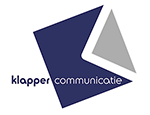 Television channel distribution in 2017 will be challenged by all kind of streaming services that will deliver standard digital and satellite TV packages over the internet to phone, television, and tablet. This will not only revolutionise creativity (fusion of data analysis and creativity development) but also helps advertisers to get insights in what is working. Although OTT and digital will grow, OTT services like Netflix and Amazon probably will focus on the development of fiction. So traditional television still will be a significant factor for the development of non-fiction like reality, talk, gameshows, and creating reach for advertisers. A report of Strategy Analytics Digital Media Strategies (DMS) service – Top Ten Digital Media Predictions for 2017 – supports this. American brands will re-evaluate the importance of reach and will be selling television advertising based upon total audience ratings in 2017. So traditional television is and will be an important factor in creating reach by the development of new creative formats.
Television channel distribution in 2017 will be challenged by all kind of streaming services that will deliver standard digital and satellite TV packages over the internet to phone, television, and tablet. This will not only revolutionise creativity (fusion of data analysis and creativity development) but also helps advertisers to get insights in what is working. Although OTT and digital will grow, OTT services like Netflix and Amazon probably will focus on the development of fiction. So traditional television still will be a significant factor for the development of non-fiction like reality, talk, gameshows, and creating reach for advertisers. A report of Strategy Analytics Digital Media Strategies (DMS) service – Top Ten Digital Media Predictions for 2017 – supports this. American brands will re-evaluate the importance of reach and will be selling television advertising based upon total audience ratings in 2017. So traditional television is and will be an important factor in creating reach by the development of new creative formats.
So in this blog I would like to look back in 2016 on the most extreme and innovative formats. One of the most remarkable formats was Resurrection Makeover made by Fiji TV. The programme revives a deceased person by use of high tech make-over techniques, so a dead loved person can be re-united with a family member. The format clip shows a wife – who lost her husband (died of cancer) – encountering a look-alike actor at the house door and singing the wife beloved song.
Another remarkable format shown on Sky 1 was Dogs might fly. The show deals with 12 dogs that were picked from dog care centers across the United Kingdom to undergo all sorts of challenges, from a puppetry performance to a drum lesson, a speedboat ride, a rock performance to a drum lesson. The best performing dogs were trained to fly a plane.
The National Geographic programme Mygration gave an innovative twist to the well-known survivor format. The series follow 20 elite men and women who try to survive a six week journey across the African plains, and trace the paths of the African wildlife.
The last worthwhile tv-format to mention, is Stars of Science. The format was initiated by the Qatar Foundation for Education, Science and Community Development, an important innovation platform in the region. It is a Pan-Arab edutainment reality format that challenges 12 science and technology entrepreneurs to collaborate with industry leading mentors developing all sort of innovative products. At the end a jury supported by public voting decides upon the four winners of the challenge, who take a share in a $600.000 prize.
I wonder which extreme and innovative formats will appear in 2017.
Charles Vaneker
Senior Media and Research consultant
